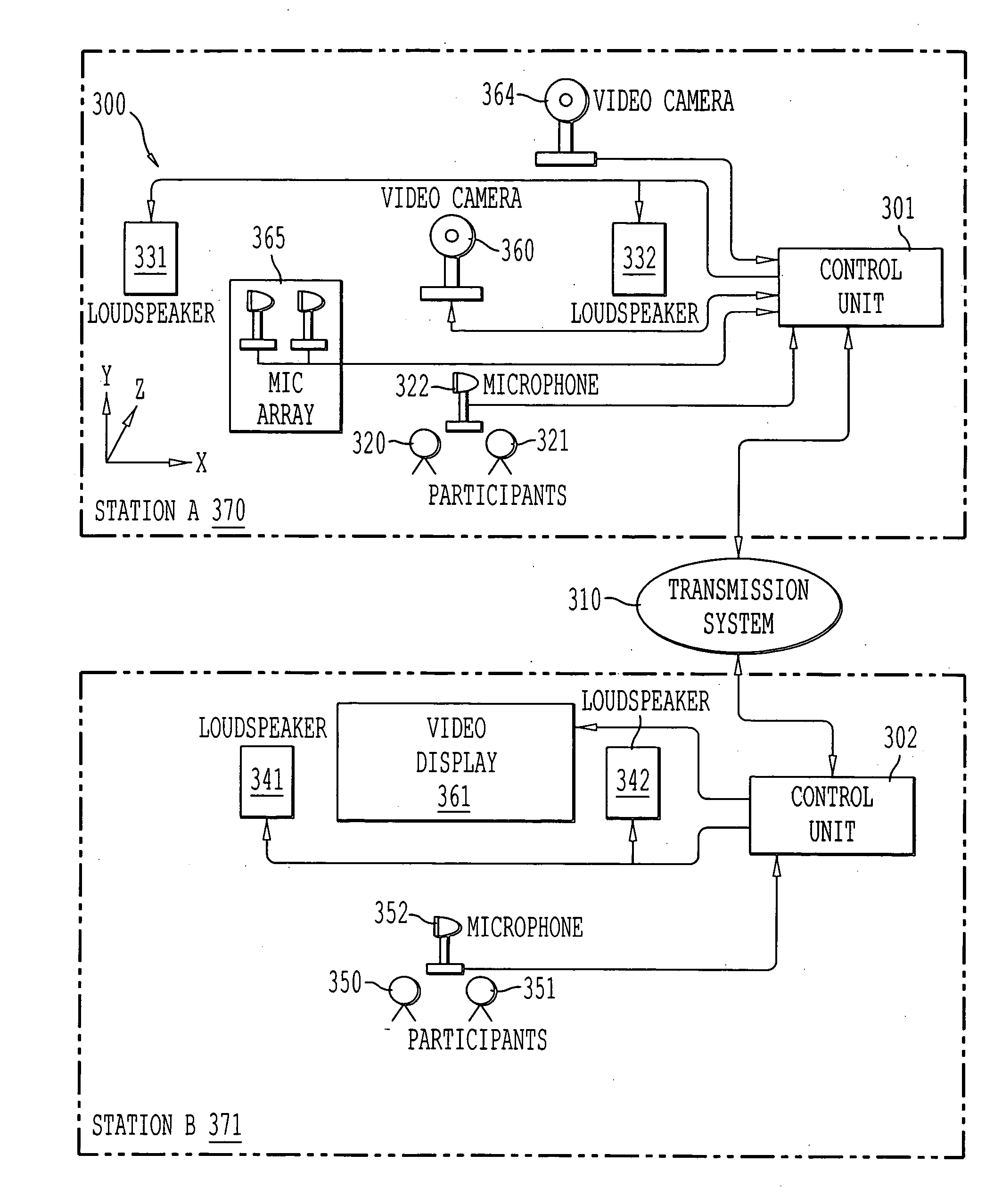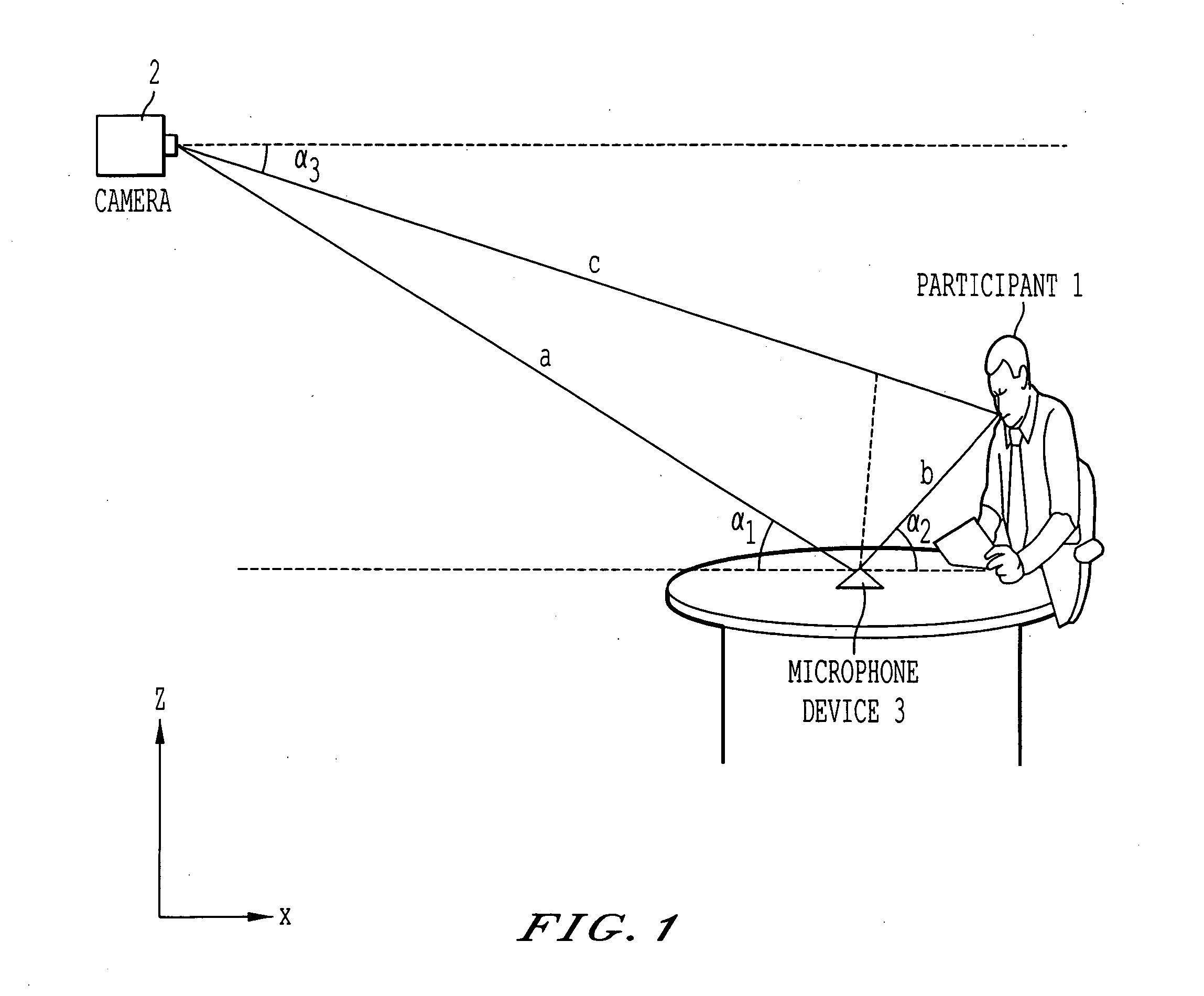Arrangement and method for audio source tracking
- Summary
- Abstract
- Description
- Claims
- Application Information
AI Technical Summary
Benefits of technology
Problems solved by technology
Method used
Image
Examples
Embodiment Construction
Referring now to the drawings, wherein like reference numerals designate identical or corresponding parts throughout the several views, and more particularly to FIG. 1 thereof, which illustrates one possible embodiment of the present invention. In FIG. 1, an arrangement used to localize the position of an audio source, participant 1, includes at least one microphone device 3 positioned separately from a camera 2. A distance “b” from the microphone device 3 to the participant 1 is less than a distance “a” from the microphone device 3 to the camera 2, thus allowing a more correct near field assumption.
A localization device, preferably placed as close to the camera in use as possible, locating one or more of the microphones, is preferably positioned as close to the participants as possible, while the microphone(s) (from now on referred to as table microphone) in turn localizes the audio source relative to their own position(s). The table microphone is provided with two or more micro...
PUM
 Login to View More
Login to View More Abstract
Description
Claims
Application Information
 Login to View More
Login to View More - R&D
- Intellectual Property
- Life Sciences
- Materials
- Tech Scout
- Unparalleled Data Quality
- Higher Quality Content
- 60% Fewer Hallucinations
Browse by: Latest US Patents, China's latest patents, Technical Efficacy Thesaurus, Application Domain, Technology Topic, Popular Technical Reports.
© 2025 PatSnap. All rights reserved.Legal|Privacy policy|Modern Slavery Act Transparency Statement|Sitemap|About US| Contact US: help@patsnap.com



